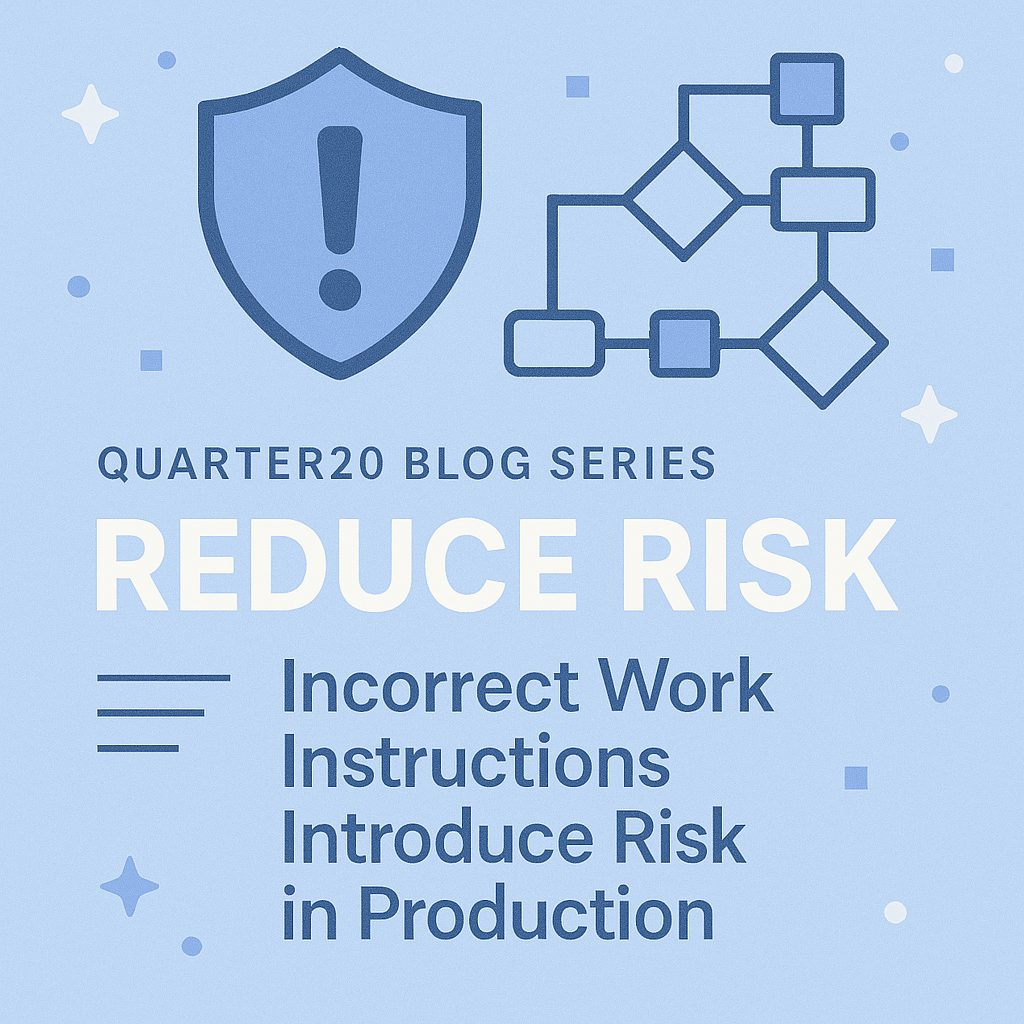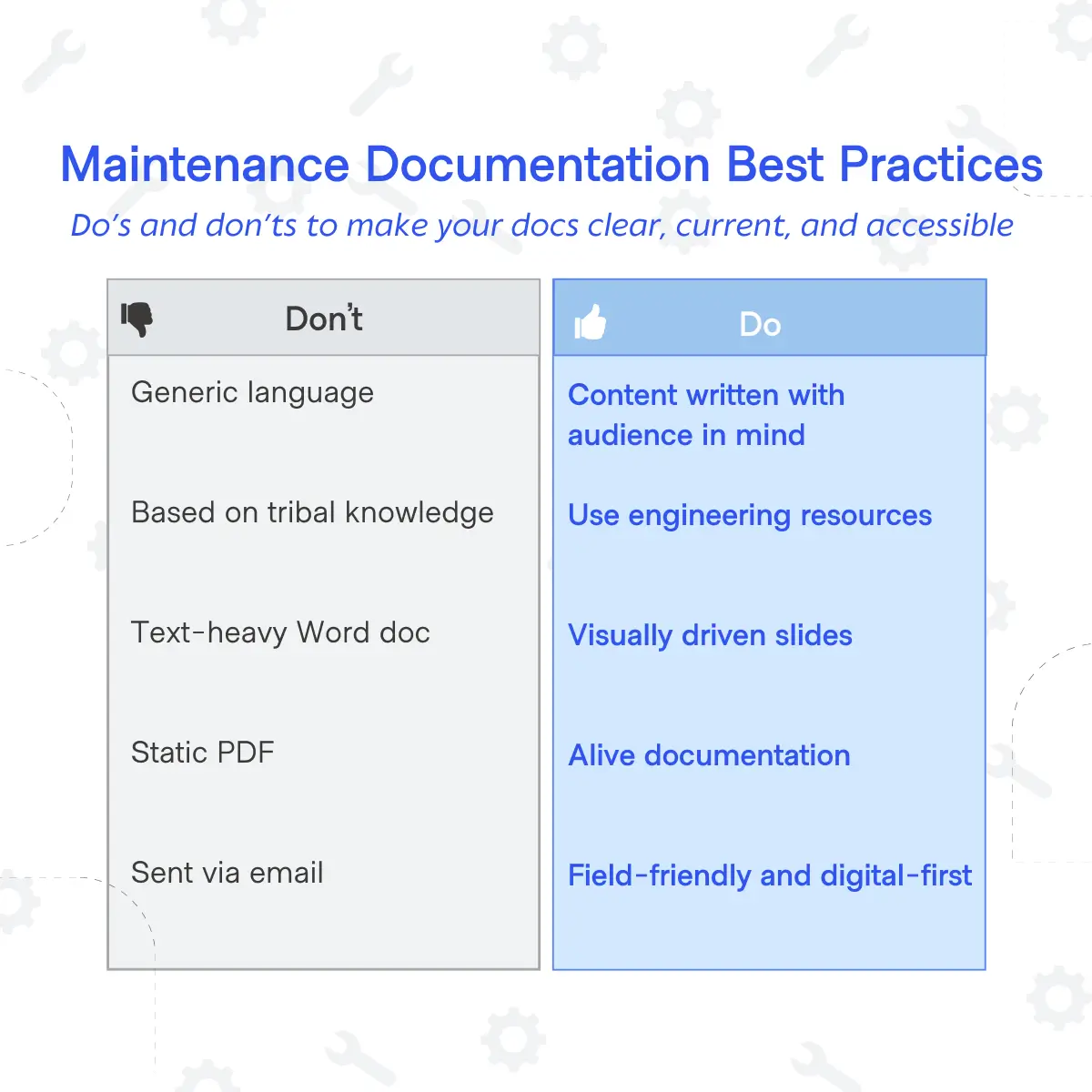Welcome to the Quarter20 blog series on work instructions. This is blog one of four in our series. To join the conversation, follow us on LinkedIn.
In October 2021, Ford issued a recall for more than 16,000 F-150 SuperCab models. The reason? Vague work instructions for the seatbelt installation. As a result, technicians routed the belts incorrectly, and Ford had to notify customers not to drive or use the front passenger seat until each car was inspected. This cost Ford an estimated $5-13M spent on repair and program costs, not to mention the hit to brand reputation.
This story isn’t an outlier. In modern manufacturing, incorrect or outdated work instructions are a huge liability that have resulted in massive recalls of many of the vehicles and products we use and love every day. This list details over 20 examples of public recalls tied to documentation failures - from incorrect torque specs and improperly written QC procedures to missing steps in maintenance logs (Real Examples of Bad Manufacturing Docs & Their Consequences). And that’s just the publicly known data. For every headline, there are dozens more hidden behind NDA walls and internal investigations.
You want to avoid getting on this list? Precision isn’t optional - it’s essential. Every process, every part, every torque spec needs to be correct the first time. It goes beyond investing heavily in quality control, engineering design, and skilled labor. If there’s one area where risk quietly and consistently creeps in, it’s documentation. Poor documentation introduces risk at every level of production: rework, safety incidents, failed audits, and product recalls. And yet, for many teams, documentation is still managed through static PDFs, tribal knowledge, or disconnected systems.
What’s at stake? More than you might think. Faulty instructions don’t just slow teams down - they compromise safety, damage customer trust, and create millions in unexpected costs. The risks are real, the impact is measurable, but the good news is: it’s fixable.
Decades of personal experience and hundreds of conversations have led us to identify four common types of risk that bad instructions introduce: quality issues, safety risks, audit and compliance gaps, and unexpected cost increases. And they don’t happen overnight - they creep up on teams through the slow erosion of clarity, structure, and ownership in the documentation process. If any of these are risks that you want to avoid, keep reading!
So What Should You Do About It?
Bad instructions are a silent risk multiplier, but they are entirely preventable. Reducing production risk starts with improving how knowledge is shared across your teams. We’ve outlined three easy steps:
Make documentation a living system
Static PDFs and tribal knowledge quickly become outdated or inaccessible. Instead, use digital tools that are web-based and encourage the digital execution of these instructions, so there is no more asking, “Is this the right doc?”. Even better: link your work instructions tool directly to data sources, like your CAD or ERP systems, so that data flows across teams.
The result: Fewer errors due to outdated instructions or mismatched spec.
Build in verification and feedback loops
Instructions can be technically correct but practically unusable on the floor. The solution? Loop in your manufacturing and technician experts early and often. Documentation is intended to be collaborative. Your tools should always enable technicians to flag unclear steps, log deviations, and leave feedback during execution.
The result: Continuous improvement and fewer recurring issues in the process.
Standardize and control versions
Multiple versions of a document floating around leads to confusion and inconsistency. Implement structured version control and approval workflows before releasing any new documentation - and follow that process each and every time!
The result: Everyone - from engineering to operators - works from the same source of truth.
If you’re still using static docs and tribal knowledge, now is the time to reduce the risk that comes with that process. Interested to learn how CAD-connected documentation can reduce risk on manufacturing lines? Reach out to try out Quarter20 today.




.png)
